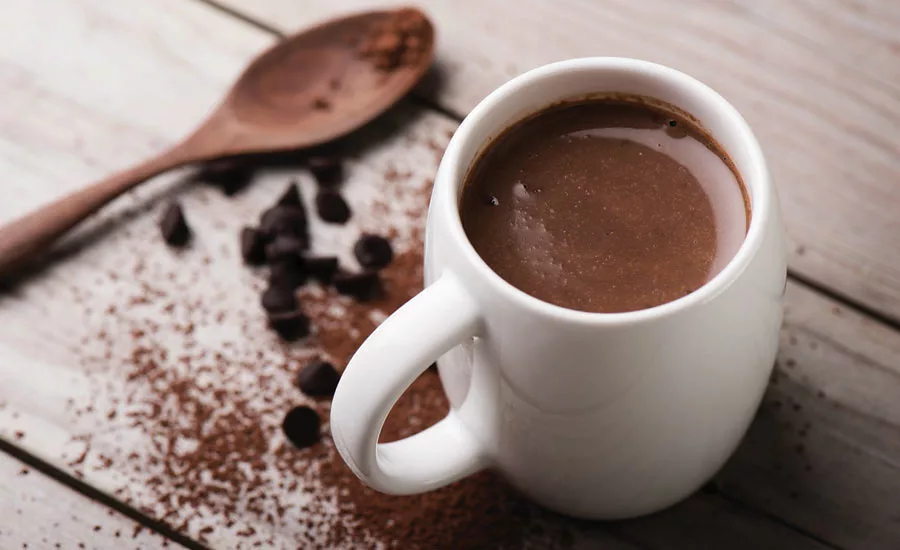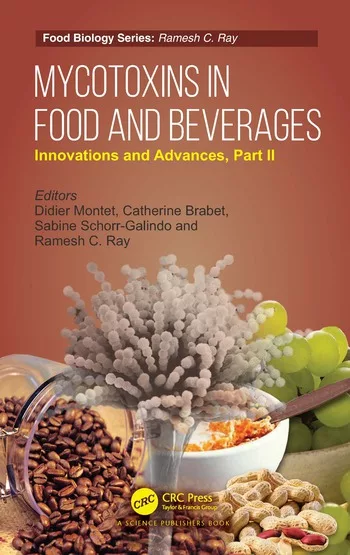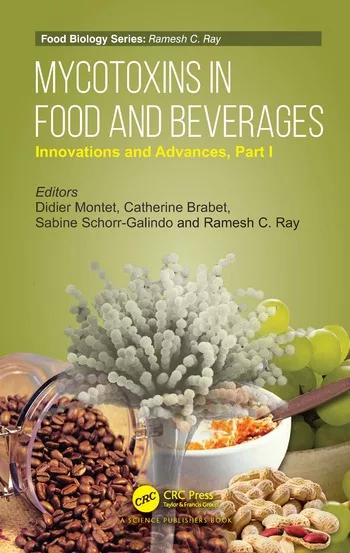Chocolate’s mass consumer appeal resonates in beverages
Nutritional drinks use chocolate to add layer of indulgence



As consumers continue to opt for food and beverages to help improve their health and wellness, the richness and indulgence of chocolate likely will remain a dominant ingredient in the beverage market. Although popular in nutritional beverages, shakes and smoothies, hot chocolate, and dairy products, the flavor also is being used to lend depth and complexity to beer and spirits.
The shift toward natural ingredients with transparent sourcing along with the global recognition of chocolate have made the ingredient the No. 2 flavor behind vanilla across the globe, according to Brian Wilson, application laboratory manager at Danvers, Mass.-based Prova Inc.
“Consumers are looking for beverages that can satisfy their sweet craving without it impacting their waistline or as an alternative to consuming a chocolate bar,” Wilson explains. “When developing a beverage, having a chocolate line extension is almost a necessity. Plus, having a good chocolate beverage makes it viable to introduce compound flavors with minimal development (chocolate caramel, chocolate almond/nut, chocolate coconut, etc.)
“Chocolate is the No. 2 flavor globally,” he continues. “You’ll be hard-pressed to find anyone that has never had chocolate. Most people have been consuming chocolate since a young age and have positive memories attached to it. They want to have the flavor available to them in a variety of forms.”
Adding color, enhancing taste and richness, maintaining a clean label, masking capabilities, and its antioxidant content are among the reasons beverage developers are choosing the multifaceted chocolate as an ingredient, experts say.
Depending on the application, ready-to-drink (RTD) beverages more frequently contain chocolate flavors or extracts, while cocoa powder is more common in powdered beverages, says Ilana Orlofsky, marketing coordinator for Niles, Ill.-based Imbibe. She adds that cocoa powder combined with a sweetening system works well as a masking agent in functional protein beverages.
“No matter what type of chocolate ingredient is used, we see hundreds of chocolate-centric flavored beverage products — with names like chocolate truffle, creamy chocolate fudge, milk chocolate, dark chocolate, creamy chocolate and frosty chocolate — to reinforce the ever-popular chocolate, a market that Mintel has projected to grow to $25 billion through 2019 in the U.S.,” Orlofsky says.
“Coffee is another category that often highlights chocolate by combining these two staples in the form of a mocha,” she continues. “This is a format that has the potential to offer more benefits than what coffee delivers on its own (alertness, energy, etc.) while also reducing the inherent bitterness.”
Ben Kruger, commercial sales leader for Minneapolis-based Cargill’s cocoa and chocolate division, adds: “In recent years, there has been a massive increase in sales of chocolate-flavored, high-protein sports recovery and meal-replacement beverages, and we see no end in sight. For these beverages, chocolate is the perfect flavor partner, masking the off-flavors associated with increased levels of whey or soy protein.”
Teresa Polli, senior marketing manager of taste at Kerry, Beloit, Wis., also highlights chocolate’s ability to mask undesirable flavors and offnotes when nutritional elements such as protein, alternative sweeteners, vitamins and fiber are added to a product.
Although considerable growth has taken place among beverages that offer nutritional or functional health benefits, consumers still will want to treat themselves to an indulgent beverage that tastes good, experts add.
“Chocolate is a mainstream flavor of choice for this purpose,” Polli says. “As the focus on the reduction of sugar and artificial sweeteners in beverages continues to grow within the industry, we expect to see greater use of dark chocolate as a flavor. Dark chocolate is perfectly positioned to impart the indulgent flavor that consumers demand while carrying a healthy halo for its high antioxidant content and association with heart health.”
Layered indulgence
As beverage-makers develop new products, the versatility of chocolate makes it a popular choice in nearly every beverage category, experts note.
On the alcohol side, Al Murphy, vice president of the alcohol division at Mother Murphy’s Flavors, Nashville, Tenn., says he’s seeing more smoked concepts and specialty origin chocolates.
“At Mother Murphy’s, we have been creating smoked chocolate flavors that put a spin on a regular chocolate,” he says. “For example, smoked chocolate whiskey or cordials are popular. The cream liqueur segment is starting to use more chocolate-flavored products. Whisper Creek has created a spin on chocolate by creating a peanut butter cup cream sipping liqueur.”
Chocolate also adds a layer of indulgence to nutritional-positioned beverages like protein and weight-loss shakes, says Marie Loewen, research and development scientist for applications development at East Greenville, Pa.-based Blommer Chocolate, citing Chicago-based Mintel’s Global New Products Database.
“This makes sense because chocolate adds a layer of indulgence to this type of product that is intended for nutritional benefit but still wants to be appealing to consumers,” Loewen says. “This is followed by hot beverage mixes, RTD coffee, flavored milks and plant-based dairy alternatives; so basically hot cocoa, mochas and chocolate milks — all the classic beverages associated with chocolate.”
Yet, Seema Kedia, senior manager of marketing and sustainability at Chicago-based Barry Callebaut USA, notes that cocoa powder, rather than chocolate, commonly is used in chocolate drinks.
“Cocoa powder provides better solubility in beverage applications and can still deliver rich, chocolaty color and flavor,” she explains. “Two primary trends in the beverage industry impacting use of cocoa powder are growth in the wellness/functional beverage categories and growth in demand for clean-label ingredients.”
Although cocoa powder is a familiar ingredient to consumers and a “great fit” for adding flavor to clean-label and better-for-you products, Kedia explains that most cocoas must go through an alkalizing process to impart specific color and flavor attributes.
“Cocoa that has been alkalized must be declared on-pack as ‘cocoa processed with alkali,’” she says, adding that many consumers are not familiar with the term “alkali.”
To combat the confusion, Barry Callebaut launched new clean-label cocoa powers — Bensdorp Clean — at SupplySide West in Las Vegas. An expansion of its Bensdorp range, Bensdorp Clean Brown and Bensdorp Clean Red are alkalized with baking soda, thus enabling beverage manufacturers to declare “cocoa processed with baking soda” instead of “cocoa processed with alkali” on an ingredient label, the company says.
Beverage formulators also are using cocoa and chocolate ingredients for their antioxidants and health benefits, as they contain several nutrients and phytonutrients, such as flavanols. When consumed in moderation, these attributes are said to help improve cardiovascular health, vascular health and cognitive health, says Kerry’s Satya Jonnalagadda, director of global nutrition science. She adds that developing evidence suggests that cocoa fibers also could aid in modulating gut microbiome.
Check your sources
As consumer demand for transparency continues to rise, experts note the importance of manufacturers knowing the origins of ingredients.
Nathan Simon, associate buyer of cocoa at Kerry, says that the source of the cocoa, including in areas like West Africa, the Ivory Coast, Ghana and Indonesia, can cause variations in taste unless the product is alkalized.
“Alkalizing cocoa neutralizes the acidity and makes cocoa from different origins have a similar taste,” Simon explains. “Likewise, the taste can change [from] crop to crop depending on weather conditions. For example, if a cocoa crop receives more than usual rainfall, this can lead to acidity issues. Fortunately, the last two crops have had a better-than-expected yield resulting in an excess supply of cocoa.”
Prova’s Wilson also points out that the source of chocolate has a huge impact on the flavor, with cocoa/chocolate flavors varying depending on the variety of cocoa, where it was grown and how it was processed.
“Two chocolate beverages with the exact same ingredient statement, but with a different cocoa origin, will taste different,” he notes. “Manufacturers and development professionals have to consider the country of origin or the variety of cocoa powders used in a cocoa powder blend when developing a beverage.”
Actively involved in cocoa sustainability for more than 10 years, Cargill offers the Cargill Cocoa Promise that brings together all of the company’s global activities and strengthens its commitment to a sustainable cocoa supply chain, it says.
“We’ve seen customers using our Cocoa Promise programs to help sell their products to consumers,” Kruger says. “It helps them build their brand value and achieve their own sustainability goals.”
Yet, beverage-makers have several challenges to overcome when formulating with cocoa, says Blake Wester, senior applications scientist of beverage at Flavorchem Corp., Downers Grove, Ill.
“Fall-out is always a concern,” Wester explains. “Proper choice of gums or pectin is important to prevent or delay [the] settling of cocoa. Extracts, such as the chocolate extracts that we produce, can also be used to give a nice chocolate flavor and aroma to any type of beverage without the worry of cocoa settling at the bottom.”
When formulating with cocoa powder, Barry Callebaut’s Kedia says there are three primary characteristics that should be evaluated: stabilizer selection, alkalization and fineness.
Because cocoa powder is approximately 30 to 35 percent water soluble, it is critical to choose the correct stabilizer to avoid segregation, network collapse and fat migration, Kedia adds.
In the future, growth for chocolate and more innovations, such as cacao nibs being brewed with hot water as cacao tea, could offer a modern take on hot chocolate, experts note.
Sustainability also will remain important.
“Chocolate will maintain its ubiquitous position as a flavor in the beverage category. Kerry offers a portfolio of Simply Nature products … and brings industry-leading expertise in cocoa sourcing and extraction,” Kerry’s Market Research Manager Nina Jacobson says. “While taste remains a key driver, the story of the journey the cocoa bean makes to the final product is taking a priority position as well.” BI
Looking for a reprint of this article?
From high-res PDFs to custom plaques, order your copy today!








